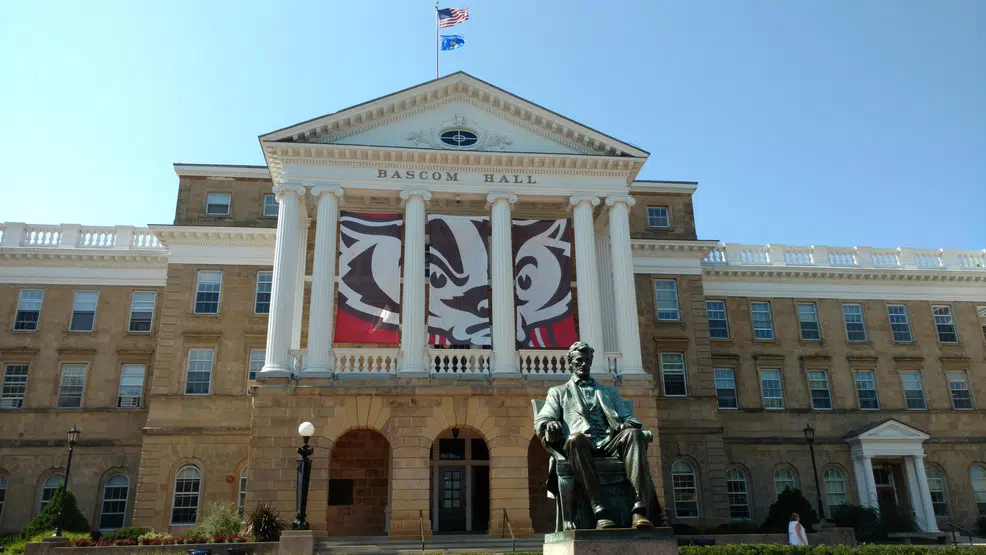
The Lincoln statue at the UW Madison Campus (Fox 11 Online)
(WTAQ-WLUK) — It may soon cost more to send your student to a Universities of Wisconsin school, as the Board of Regents will vote Thursday on a 5% tuition increase for most of its universities.
While some say it’s needed to stay competitive amid lagging financial support from the state, others question whether the hike is necessary.
After a decade-long freeze, tuition to attend a UW school is set to go up for a third year in a row.
“I don’t love it, but the UW is still a good bargain,” said State Sen. Jamie Wall, D-Green Bay. “The tuition is lower than in neighboring states, and that’s true for the flagship in Madison and throughout the system.”
Over the past 10 years, tuition has gone up 7.7% compared to a range of 21.7% to 28.8% for neighboring states, according to the Universities of Wisconsin.
If the request is passed, tuition at UW-Madison next year will go up $500 for Wisconsin residents to $10,506. When you count housing, fees and supplies, the increase is about 3.8%.
The proposed resident undergraduate tuition and segregated fees for each university in 2025-26 are as follows:
- UW-Eau Claire: $10,067
- UW-Green Bay: $8,985
- UW-La Crosse: $10,360
- UW-Madison: $12,166
- UW-Milwaukee: $10,916
- UW-Oshkosh: $8,993
- UW-Parkside: $8,658
- UW-Platteville: $8,812
- UW-River Falls: $9,249
- UW-Stevens Point: $9,477
- UW-Stout: $9,859
- UW-Superior: $9,272
- UW-Whitewater: $8,819
“If they were just to right size the institutions’ staff-to-student ratio, they can save hundreds of millions of dollars, and they’re just not doing it,” said State Sen. Eric Wimberger, R-Oconto.
About $700 million per year, according to Wimberger, if student-to-staff ratios returned to 2014 levels.
A recent audit shows academic staff in the system grew by 33.4% since 2014, with salary expenses up 97.4%. Limited appointees were also up 39%, while university staff employees dropped 33%. During that same 10 years, enrollment dropped by about 16,000 students.
“So, you have a significant amount of people in there who are just secondary staff that are servicing fewer and fewer students in the system,” said Wimberger. “It’s just not appropriate.”
If you take out UW-Madison, overall academic employees dropped over the past 10 years.
Mark Pitsch, director of media relations for Universities of Wisconsin, sent the following statement on the recent audit:
Since 2018, not including UW-Madison, we are down about 1,000 positions across the Universities of Wisconsin. Overall, state funded positions are down about 1,220 since 1993. Non-faculty positions involve a lot of different services provided to students and the state, including research and student support. For example, research has increased significantly at UW-Madison during this time, which is great for Wisconsin and our nation. Meanwhile, our graduation rates are up and time-to-degree is down. We’re doing a better job of facilitating student success with fewer people funded by the state.
“If there’s more research money coming into UW-Madison, you need more people to work on it,” said Wall. “That’s not a terrible thing.”
The recently passed state budget provided a $256 million dollar increase for the Universities of Wisconsin. It’s the largest jump in more than two decades, but only about 30% of what the system requested.



Comments